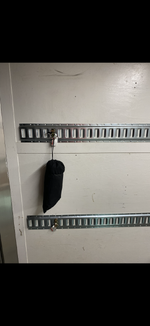- Banned
- #21
TaperPin
WKR
- Joined
- Jul 12, 2023
- Messages
- 6,317
Sailrite machines have a large following, great customer support, are compact, easy to store, easy to learn, somewhat upgradable for slower speed/more power, and will do most things. To be fair the last thing I sewed on one was a hot tub cover 8 years ago, but it sewed about a 100 weight thread through 5 layers (handles), and never broke a needle on the whole project.Nice stuff. I did sew my glove this morning, does that count. What do you guys think a good machine is for sewing cordura or regular nylon?
Some, not all, but some folks end up outgrowing it and upgrading to a full size industrial triple feed for the larger bed, bigger bobbins, more speed, and different form factor. My sister has the old Sailrite and I found a great Seiko triple feed industrial as a Christmas present. The biggest problems with a full size industrial is the weight of the machine and size of the table, which make them much less desirable to put away in storage and take out when you want to sew something. She ends up using the Sailrite much more. On the other hand I almost stopped using the Sailrite completely when I got into full size machines.
If you like to tinker, the old vintage Singer/Consew/Juki/Seiko triple feed walking foot machines are basically very similar to each other, and can be less expensive, but are usually in need of tedious adjustments and replacement of some wear parts. I obtained two that were in a warehouse fire and had minor smoke damage for next to nothing. Nothing free is ever free and it was a couple hundred to get them in good sewing condition and I had to track down a sewing table, motor and speed reducer. $500 buys a good working used machine, but like a used car it almost requires a mechanic to look at it and judge its value.
I passed up a valuable leather stitching machine that had a unique factory paint job, even had the guy who sold it originally many states away give the back story, but it was damaged in shipping and missing parts - hard to get, expensive parts. A guy bought it after learning about it from me, and later it was sold on eBay for 4x what he bought it for. Unfortunately, the eBay purchaser didn’t look closely enough at the condition, assumed it was working, and was in for an expensive surprise. I used to buy a used fixer upper machine off eBay once or twice a year, but so many are damaged in shipping from improper packaging, that I recommend a new machine, or at least buy a used one from a dealer that knows how to crate it up.
New full size machines are $1k to $4k depending on features and brand.
I’m biased, but most folks I’ve known who get a full size industrial don’t ever go back to using smaller machines.
Last edited:










